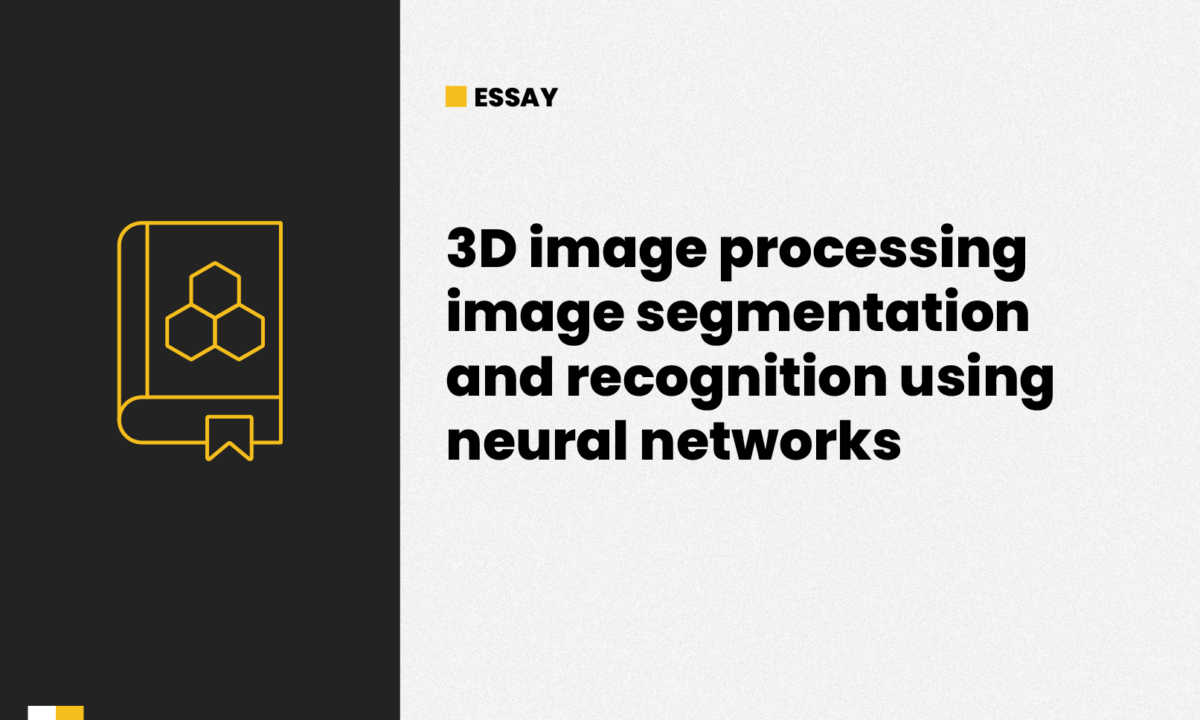
3D image processing image segmentation and recognition using neural networks
3D Image processing: image segmentation and recognition using neural networks
Introduction:
The study and understanding of soil behavior involve the use of highly expensive equipment in the laboratory. Furthermore, obtaining soil samples for study in these laboratories involves complex and laborious procedures, in addition to the difficult accessibility that present some places where samples are made. For these reasons and considering the great computational development of the last decades, creation of a digital database of soils that will allow computational simulation of all procedures performed in laboratories, as well as natural phenomena such as landslides and subsidence due to geological faults, is proposed. It in turn will help prevent risks related to infrastructure damage and loss of life.
Description:
The objective of this research is to generate a database of soil samples by obtaining three-dimensional images of the grains of these samples by using of these samples by using X-ray computed tomography (3DXRCT). From this, 3D photographs of the soil sample under study are obtained on which a segmentation process is applied using filter such as Non-local means, Binarization and watershed. These filters help to clean noise from images or any blur, also distinguishing and separating objects within the sample. Once the segmentation of the 3DXRCT images is obtained, a gradient method is used to calculate mathematical functions known as Level Sets, which are digital representations of the grains of the original sample. This last part focuses on the efficiency in digitizing as many grains as possible of the originally tomographed. Finally, morphological characteristics of the grains such as sphericity, roundness, aspect ratio, surface area and volume are calculated. Together in this whole process, it is necessary to implement a neural network for a more efficient process in terms of distinguishing and separating very close grains.
In addition, this database also includes both mineralogical characterization through the use of X-ray diffractometry, and mechanical characterization through standardized test of soil laboratories.
Benefits to the community:
This project will help to improve our understanding of the behavior of soils through computer simulations, which will allow us to prevent damage to the community and infrastructure caused by landslides, earthquakes, volcanic eruptions and geological faults. In addition, the techniques developed for this project have application in different areas of science as in medicine in which it allows us to detect inflamed tumors. The field of image processing is quite broad, covering problems of classification of objects, so it will help in engineering areas such as counting and classification of traffic in different areas.
Project time:
The time taken for the execution of this project is approximately 2 years due to the processes related to taking samples, laboratory tests, creation of algorithms and calibration of them.
Required equipment:
The project requires a computer capable of high-speed image processing, and if possible, a High performer computer to streamline all calculations by optimizing the execution time of codes and programs for the different tests required, in the same way all equipment and materials necessary for soil sampling are required.
Costs:
A support of 100 000 dollars is required for the high cost of sampling campaigns, 3DXRCT samples by X-ray diffractometry and laboratory tests of soil mechanics.
